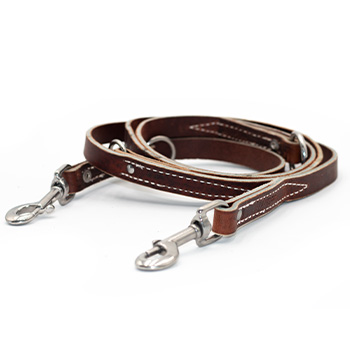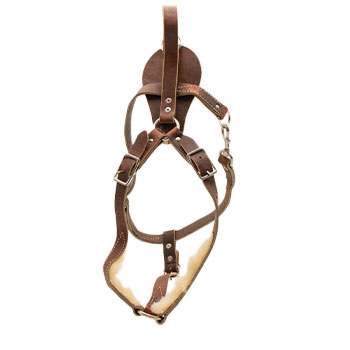May 17, 2011
My patrol dog has problems with the down when he is not near me and in drive. Any ideas of what I can try?
Full Question:
My patrol dog will down next to me, however, when I try to down him from a distance (like down a long hallway or while recall or when he's a few feet from me etc.) he runs to my side and just looks at me like a big kid and at times barks at me. He's never liked to down since I got him. It took good hard corrections to get him to lay down for me (when I first got him 7 months ago). Again its only a problem when he's in drive and searching away from me. If you get a chance to give a little more advice I would appreciate it. Thanks a million again for the other advice. P.S. When at home he is the COMPLETE OPPOSITE, he's totally relaxed and submissive to my every whim and shows total submission to me. The problems start when we leave the house and begin our shift (GO FIGURE).Respectfully, AZ

 Ed's Answer:
Ed's Answer:
There are a lot of options to reinforce the down. I will just pass on a couple that I use on my police dog (who can have a tendency to do the same thing).
To most dogs, the down is a submissive posture. That’s why you had a problem getting the dog to down when you first got him. I usually wait until I have had a dog for awhile and the bonding is good before I put any force into a down. Trying to force the wrong dog into a down is a good way to get bit. (I understand this is not a problem with your dog - I just mention it for other new K9 handlers that read this.)
Teaching the dog to down "FOR YOU" (even though he already knows the command) is important. I begin with food or a toy and do it motivationally. I will always use motivation to begin the training. Do it in a situation where the dog is comfortable with - your back yard. Motivation can be built through the "2 ball game."
With patrol dogs I will use a long line and an electric collar on low level stimulation. The dog must have gone through the conditioning phase of the electric collar (which is to detailed for this question). The concept is to teach the dog that if he downs he gets a bite. Once he understands that its expanded to "if he downs and then comes back to heel - he then gets a bite."
I will begin in a training area the dog is used to (less distractions). The helper does not stimulate the dog a lot (he will be high enough in drive by just seeing the helper) and after the bite the fight is kept to a minimum. The idea is not to fight and tire the dog but to force him to think.
The dog comes into the training area with the collar and long line on. He is expected to heel and be under control. With a minimum of helper stimulation (to keep drive low) he is sent towards the helper. When the dog is 30 to 40 feet from the helper the dog is "DOWNED." This spot is pre-determined to be at the end of the long line. If the dog does not down he hits the end of the line. He is also given collar stimulation before the command. When he downs the stimulation stops. When the dog gives 3 or 4 barks he is immediately given the bite command.
If the dog turns to come back to the handler after hitting the end of the leash, the helper stimulates the dog to get his attention and the process starts all over. The dog that wants to return is played like a fish until he downs and is focused on the helper. Again, 3 or 4 barks and he is given a bite.
When the dog begins to understand that "HE MUST DOWN" - then the helper stimulation is increased to raise the distraction level. The dog can also be expected to bark a little longer when you get to this point (just don't over do it and every once in awhile - let him have a bite after 2 or 3 barks.) The dog is still attached to a long line through all of this work.
When I am satisfied with this, then its time to introduce the "RECALL." The exercise is the same except that the dog is called back to the handler before he is sent in for the bite. The key to this training is to IMMEDIATELY send the dog to bite as soon as he gets back to the handler. The dog then learns that "if I bust my butt to get back quickly I get my bite."
This process will result in a dog that will drop on a dime and recall with speed. It also produces a bark and hold from 30 to 40 feet from the suspect. This accomplished a 2 things things:
The first part of this training is always done on a training field. When the dog is solid there then the training is moved out on the street to various places. While the long line will be removed, I don't feel the collar should ever be taken off. When I get a call out (even for a narcotics search) the collar goes on my dog. He knows that he has to get it on before he gets into the truck.
Electric collars are becoming one of the most important training tools available to K9 handlers.
To most dogs, the down is a submissive posture. That’s why you had a problem getting the dog to down when you first got him. I usually wait until I have had a dog for awhile and the bonding is good before I put any force into a down. Trying to force the wrong dog into a down is a good way to get bit. (I understand this is not a problem with your dog - I just mention it for other new K9 handlers that read this.)
Teaching the dog to down "FOR YOU" (even though he already knows the command) is important. I begin with food or a toy and do it motivationally. I will always use motivation to begin the training. Do it in a situation where the dog is comfortable with - your back yard. Motivation can be built through the "2 ball game."
With patrol dogs I will use a long line and an electric collar on low level stimulation. The dog must have gone through the conditioning phase of the electric collar (which is to detailed for this question). The concept is to teach the dog that if he downs he gets a bite. Once he understands that its expanded to "if he downs and then comes back to heel - he then gets a bite."
I will begin in a training area the dog is used to (less distractions). The helper does not stimulate the dog a lot (he will be high enough in drive by just seeing the helper) and after the bite the fight is kept to a minimum. The idea is not to fight and tire the dog but to force him to think.
The dog comes into the training area with the collar and long line on. He is expected to heel and be under control. With a minimum of helper stimulation (to keep drive low) he is sent towards the helper. When the dog is 30 to 40 feet from the helper the dog is "DOWNED." This spot is pre-determined to be at the end of the long line. If the dog does not down he hits the end of the line. He is also given collar stimulation before the command. When he downs the stimulation stops. When the dog gives 3 or 4 barks he is immediately given the bite command.
If the dog turns to come back to the handler after hitting the end of the leash, the helper stimulates the dog to get his attention and the process starts all over. The dog that wants to return is played like a fish until he downs and is focused on the helper. Again, 3 or 4 barks and he is given a bite.
When the dog begins to understand that "HE MUST DOWN" - then the helper stimulation is increased to raise the distraction level. The dog can also be expected to bark a little longer when you get to this point (just don't over do it and every once in awhile - let him have a bite after 2 or 3 barks.) The dog is still attached to a long line through all of this work.
When I am satisfied with this, then its time to introduce the "RECALL." The exercise is the same except that the dog is called back to the handler before he is sent in for the bite. The key to this training is to IMMEDIATELY send the dog to bite as soon as he gets back to the handler. The dog then learns that "if I bust my butt to get back quickly I get my bite."
This process will result in a dog that will drop on a dime and recall with speed. It also produces a bark and hold from 30 to 40 feet from the suspect. This accomplished a 2 things things:
- The dog is far enough away from the suspect that he is less likely to take a cheap shot and bite when he is not supposed to.
- By keeping a real high drive dog further back, he is always under more control than when he is doing a B&H from 2 or 3 feet away from the suspect.
The first part of this training is always done on a training field. When the dog is solid there then the training is moved out on the street to various places. While the long line will be removed, I don't feel the collar should ever be taken off. When I get a call out (even for a narcotics search) the collar goes on my dog. He knows that he has to get it on before he gets into the truck.
Electric collars are becoming one of the most important training tools available to K9 handlers.
100% (1 out of 1)
respondents found this answer helpful


Can't find what you're looking for?




